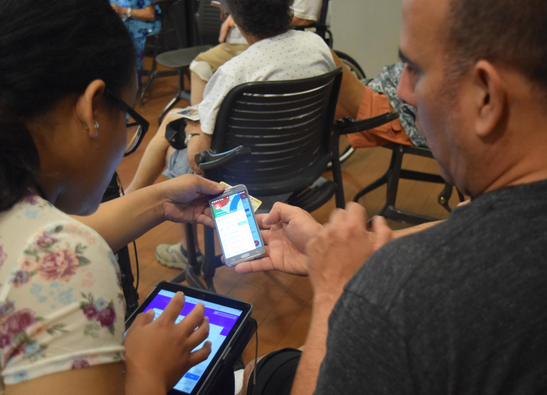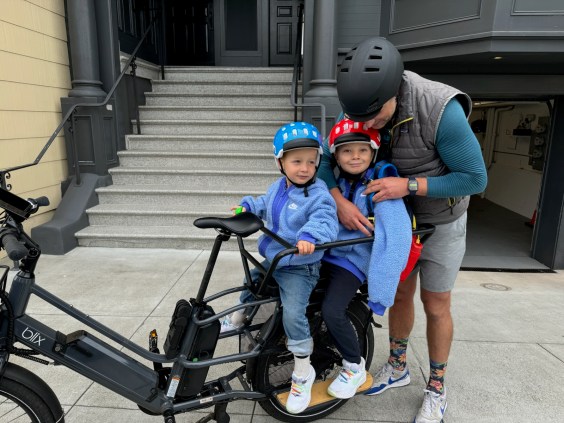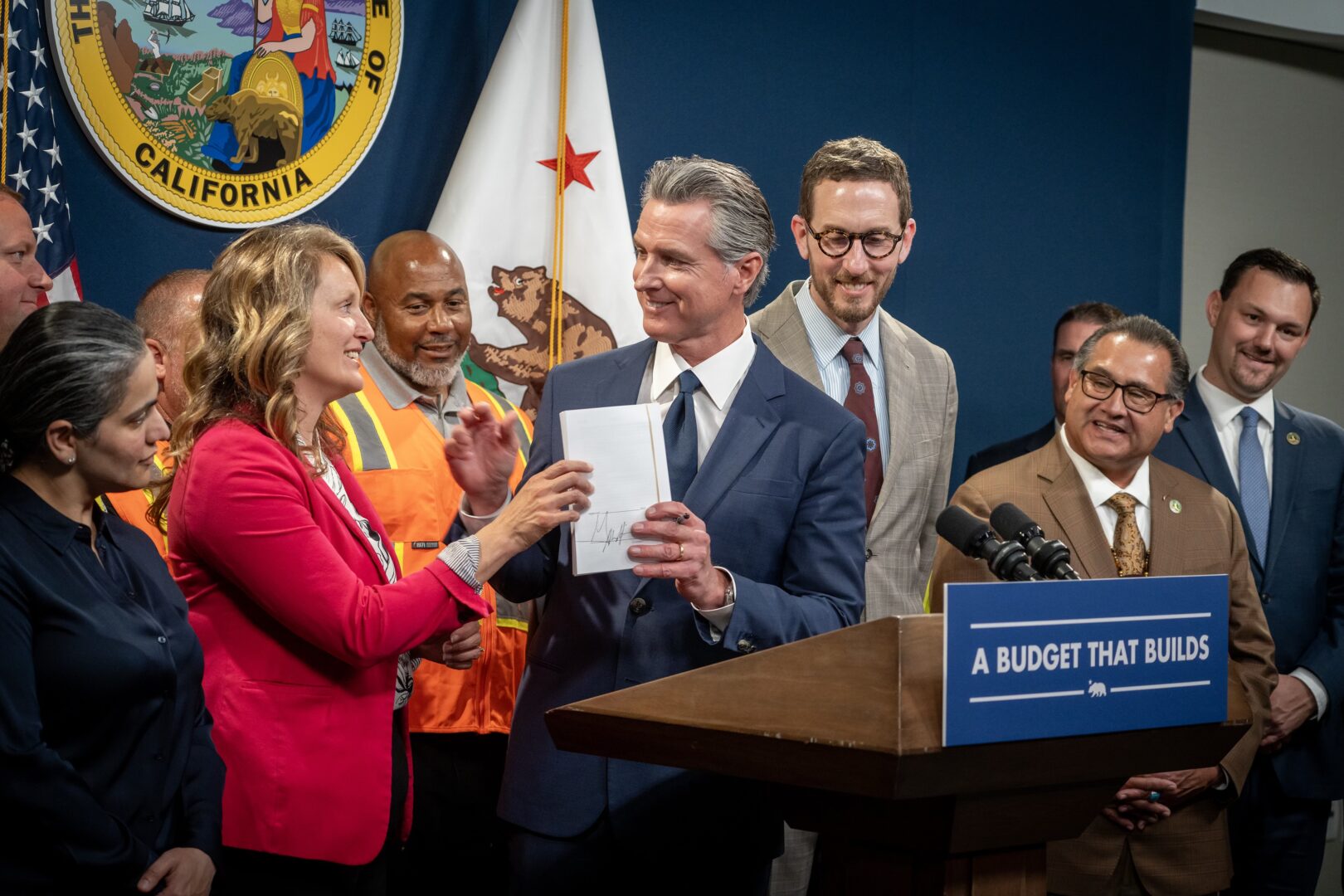Note: GJEL Accident Attorneys regularly sponsors coverage on Streetsblog San Francisco and Streetsblog California. Unless noted in the story, GJEL Accident Attorneys is not consulted for the content or editorial direction of the sponsored content.
AARP, as part of its work to increase safety and livability for seniors and everybody else, created the Community Challenge Grant to foster quick action that can have lasting impacts on community safety and livability. The grants are offered for projects that use the built environment to improve social connections, expand work and educational opportunities, and encourage inclusive community engagement and interaction among a diverse population.
This is the second year the grants have been awarded. AARP received more than 1,600 applications for the 2018 grants, and will award $1.3 million to 129 projects nationwide. These are not huge grants; they are meant to be used for immediate improvements that can help jump-start larger, longer-term changes in how people relate to their communities. The projects must be completed by November 5, 2018.
The five grants in California will go to:
- Walk Long Beach, granted $7,800 to help it plan and host a ten-mile historical walking tour that will involve two temporary crosswalks
- The City of West Sacramento, granted $10,000 to develop and expand its educational programming to encourage residents to use the city’s on-demand ride-share and bike-share systems
- Chula Vista, which will receive $5,820 to educate people about how to use public transit
- The Florence Fang Asian Community Garden in San Francisco, which will receive $7,000 to improve the garden and expand its training around growing and eating healthy food
- The City Heights Community Development Corporation in San Diego, which will receive $10,000 to create art features and enhancements at a local bus stop
The Community Challenge grant program is part of a nationwide initiative called AARP Livable Communities. It engages with cities, nonprofits, advocates, and others to encourage people to think about and plan and build safe, walkable streets, age-friendly housing, multiple transportation options.
The small size of the grants highlights what is possible with a little bit of funding. The large number of applicants also shows how ready communities are to make these kinds of changes—and raises the question of why state and local transportation funding is taking so long to shift towards better planning for moving people, not just cars.
West Sacramento Mayor Christopher Cabaldon says that while the amount of money is trivial, cash is always good. And the grants are “an 'attaboy,' really, for folks that are trying something different—which is far more important than the cash.”
In the case of West Sacramento, the grant provides money to help develop and expand an existing program to educate residents about new transportation options available to them, specifically on-demand ride-share and dockless electric bike-share. The city is conducting an eighteen-month pilot of ride-share vans to supplement its transit service, and at the same time it launched what Cabaldon says “is about to be largest electric-assist bike share system in the U.S.” with Jump bikes.
The education program is two-fold. It includes workshops on the ride-share system and urban cycling classes. Those are aimed at helping people figure out how to access the Jump bikes as well as identify the low-stress routes that are best for riding.
The ride-share pilot uses vans to provide not-quite door-to-door rides—“more like door-ish to door-ish,” said Cabaldon—in areas where it is difficult for traditional transit to work efficiently because of the area's low density development patterns.
The city has not centered its mobility work so much on supporting transit as on making it as easy and affordable as possible for people to get around West Sacramento, said Cabaldon. “We're too spread out, and land uses are highly segregated, so buses are running empty much of the day,” he said. “We'd been trying to just increase service but it doesn't work; it's too far from where [people are] going, and because it has to pick up people all over the place, it's inefficient, and it's expensive for the tax payers.”
The city is working on the theory that they can blend the approach of paratransit with the customized on-demand convenience of Uber and Lyft, but with something that is closer to the cost of a bus fare. That means “optimizing the system for the rider network,” said Cabaldon, “not the driver. The whole system performs better when vans stick to collector and arterial streets.” So although people have to walk a bit—a block or two—“it's still better than walking eight blocks to a bus stop.”
“Right now we're testing whether people want that, whether they will use it, whether it makes sense for our transit budget,” said Cabaldon. So far, he said, “Response has been stronger than we anticipated—among seniors, for sure, but also among teens. We're seeing a large number of teenagers that are using it to go to college classes after school, or to get to an internship, or just getting a ride without having to ask a parent.”
One of the appeals for West Sacramento is that the system is universal, said Cabaldon, rather than limited to a certain segment of the population. “It can be used to reach medical appointments, or to go shopping, or if you just want to go to a local brewery with your buds.”
The “basic training” courses the AARP grant will fund are key to answering questions about how effective the service is for people, and will help inform the results of the pilot, which is being studied by a team of researchers at UC Berkeley.
Chula Vista is also receiving an AARP grant, for a similar project, on an even smaller scale. That city will coordinate with the local transit agency, MTS, to offer a series of field trips on public transportation. The idea is to help people figure out how to ride transit, and a thirty-day transit pass is part of the deal. The department administering the grant also plans to produce an educational video that it can use to help educate future transit users.
Meanwhile Walk Long Beach's grant will be used for a very short-term project: a one-day historical walking tour of the city that will connect two California Ranchos on September 8. The route will follow a ridge in the city—cutting through Signal Hill—and will require the creation of several temporary crosswalks to help participants follow the ridge.
Steve Gerhardt, executive director of Walk Long Beach, says the group is working with the city of Long Beach to design the crossings, and sees them as a demonstration of how the city can do nicer crosswalks to welcome walkers. Not that Long Beach is a stranger to pretty crosswalks—you can find rainbows, piano keys, and other designs there. And the city is also no stranger to guerrilla crossings, where people—not always Walk Long Beach—have taken it upon themselves to create a crossing where they think one is needed.
The crossings funded by the AARP grant will be fully sanctioned by the city, but will only be up for the duration of the event.
They are still refining the route, but in general it will go through neighborhoods, a few smaller industrial areas, and run along Cal State Long Beach and to Los Cerritos. It's a ten-mile route—Walk Long Beach's first attempt at a big, community-wide event—and because of the AARP grant as well as one they got from the Port of Long Beach, participation will be free.
“We're trying to line up prizes for people who do the whole thing,” said Gerhardt. “We want people to register, but really we just want every body to come out and have fun.”






